First owned by HRH Prince Charles of Belgium, Count of Flanders 1960 Ferrari 250 GT Series II Coupé Coachwork by Pinin Farina Chassis no. 1823GT •Delivered new by Garage Francorchamps in Belgium •Factory restored in 2017 •Registered in Monaco •Original colour combination •Ferrari Classiche certified Fußnoten By the early 1960s, road car production had ceased to be a sideline for Ferrari and was seen as vitally important to the company's future stability. Thus the 250, Ferrari's first volume-produced model, can be seen as critically important, though production of the first of the line - the 250 Europa, built from 1953 to '54 - amounted to fewer than 20. Before the advent of the Europa, Ferrari had built road-going coupés and convertibles in small numbers, usually to special customer order using a sports-racing chassis as the basis. Ghia and Vignale of Turin and Touring of Milan were responsible for bodying many of these but there was no attempt at standardisation for series production and no two cars were alike. The introduction of the 250 Europa heralded a significant change in Ferrari's preferred coachbuilder; whereas previously Vignale had been the most popular carrozzeria among Maranello's customers, from now on Pinin Farina (later 'Pininfarina') would be Ferrari's number one choice, bodying no fewer than 48 out of the 53 Europa/Europa GTs built. Pinin Farina's experiments eventually crystallised in a new Ferrari 250 GT road car that was first displayed publicly at the Geneva Salon in March 1956. However, the Torinese carrozzeria was not yet in a position to cope with the increased workload, resulting in production being entrusted to Carrozzeria Boano after Pinin Farina had completed a handful of prototypes. True series production began with the arrival of Pininfarina's 'notchback' Coupé on the 250 GT chassis, some 353 of which were built between 1958 and 1960 within the sequence '0841' to '2081'. However, the relatively small scale of production meant that cars could still be ordered with subtle variations according to customer choice, as well as enabling a handful of show cars and 'specials' to be constructed on the 250 GT chassis. A number of important developments occurred during 250 GT production: the original 128C 3.0-litre engine being superseded by the twin-distributor 128D, which in turn was supplanted in 1960 by the outside-plug 128F engine which did away with its predecessor's Siamesed inlets in favour of six separate ports. On the chassis side, four-wheel disc brakes arrived late in 1959 and a four-speeds-plus-overdrive gearbox the following year, the former at last providing the 250 GT with stopping power to match its speed. More refined and practical than any previous road-going Ferrari, yet retaining the sporting heritage of its predecessors, the 250 GT is a landmark model of immense historical significance. Despite this, original survivors are relatively few, as many have been modified and converted into replicas of more exotic Ferraris such as the 250 GTO, Testarossa, etc. According to the accompanying Massini Report, chassis number '1823' is the 305th of the 353 units built, and as a 'Series II' car has the added advantage of disc brakes all round. '1823' was built to the special order of its first owner, HRH Prince Charles of Belgium (Karel, Count of Flanders, aka General du Boc during WW2), brother of Belgium's King Leopold III and Regent from 1944 to 1950. The chassis entered Carrozzeria Pinin Farina's plant in Turin on 24th February 1960 and was finally completed back at the Ferrari factory on 22nd April 1960. Later in 1960 the Ferrari was despatched to Jacques Swaters' Garage Francorchamps in Brussels, Belgium for delivery to Prince Charles. (The first owner shown on the factory paperwork, Carlo Scaglietti, was a surrogate acting for the actual owner). The Ferrari's original colour scheme was the somewhat unusual combination of Marrone Testa di Moro with natural interior. Special features specified b
First owned by HRH Prince Charles of Belgium, Count of Flanders 1960 Ferrari 250 GT Series II Coupé Coachwork by Pinin Farina Chassis no. 1823GT •Delivered new by Garage Francorchamps in Belgium •Factory restored in 2017 •Registered in Monaco •Original colour combination •Ferrari Classiche certified Fußnoten By the early 1960s, road car production had ceased to be a sideline for Ferrari and was seen as vitally important to the company's future stability. Thus the 250, Ferrari's first volume-produced model, can be seen as critically important, though production of the first of the line - the 250 Europa, built from 1953 to '54 - amounted to fewer than 20. Before the advent of the Europa, Ferrari had built road-going coupés and convertibles in small numbers, usually to special customer order using a sports-racing chassis as the basis. Ghia and Vignale of Turin and Touring of Milan were responsible for bodying many of these but there was no attempt at standardisation for series production and no two cars were alike. The introduction of the 250 Europa heralded a significant change in Ferrari's preferred coachbuilder; whereas previously Vignale had been the most popular carrozzeria among Maranello's customers, from now on Pinin Farina (later 'Pininfarina') would be Ferrari's number one choice, bodying no fewer than 48 out of the 53 Europa/Europa GTs built. Pinin Farina's experiments eventually crystallised in a new Ferrari 250 GT road car that was first displayed publicly at the Geneva Salon in March 1956. However, the Torinese carrozzeria was not yet in a position to cope with the increased workload, resulting in production being entrusted to Carrozzeria Boano after Pinin Farina had completed a handful of prototypes. True series production began with the arrival of Pininfarina's 'notchback' Coupé on the 250 GT chassis, some 353 of which were built between 1958 and 1960 within the sequence '0841' to '2081'. However, the relatively small scale of production meant that cars could still be ordered with subtle variations according to customer choice, as well as enabling a handful of show cars and 'specials' to be constructed on the 250 GT chassis. A number of important developments occurred during 250 GT production: the original 128C 3.0-litre engine being superseded by the twin-distributor 128D, which in turn was supplanted in 1960 by the outside-plug 128F engine which did away with its predecessor's Siamesed inlets in favour of six separate ports. On the chassis side, four-wheel disc brakes arrived late in 1959 and a four-speeds-plus-overdrive gearbox the following year, the former at last providing the 250 GT with stopping power to match its speed. More refined and practical than any previous road-going Ferrari, yet retaining the sporting heritage of its predecessors, the 250 GT is a landmark model of immense historical significance. Despite this, original survivors are relatively few, as many have been modified and converted into replicas of more exotic Ferraris such as the 250 GTO, Testarossa, etc. According to the accompanying Massini Report, chassis number '1823' is the 305th of the 353 units built, and as a 'Series II' car has the added advantage of disc brakes all round. '1823' was built to the special order of its first owner, HRH Prince Charles of Belgium (Karel, Count of Flanders, aka General du Boc during WW2), brother of Belgium's King Leopold III and Regent from 1944 to 1950. The chassis entered Carrozzeria Pinin Farina's plant in Turin on 24th February 1960 and was finally completed back at the Ferrari factory on 22nd April 1960. Later in 1960 the Ferrari was despatched to Jacques Swaters' Garage Francorchamps in Brussels, Belgium for delivery to Prince Charles. (The first owner shown on the factory paperwork, Carlo Scaglietti, was a surrogate acting for the actual owner). The Ferrari's original colour scheme was the somewhat unusual combination of Marrone Testa di Moro with natural interior. Special features specified b
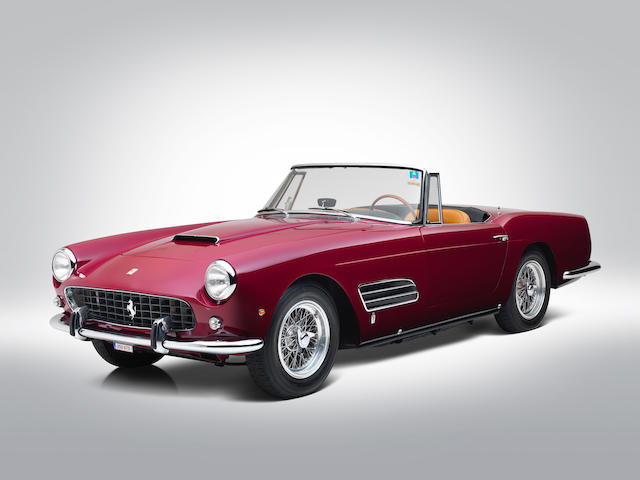
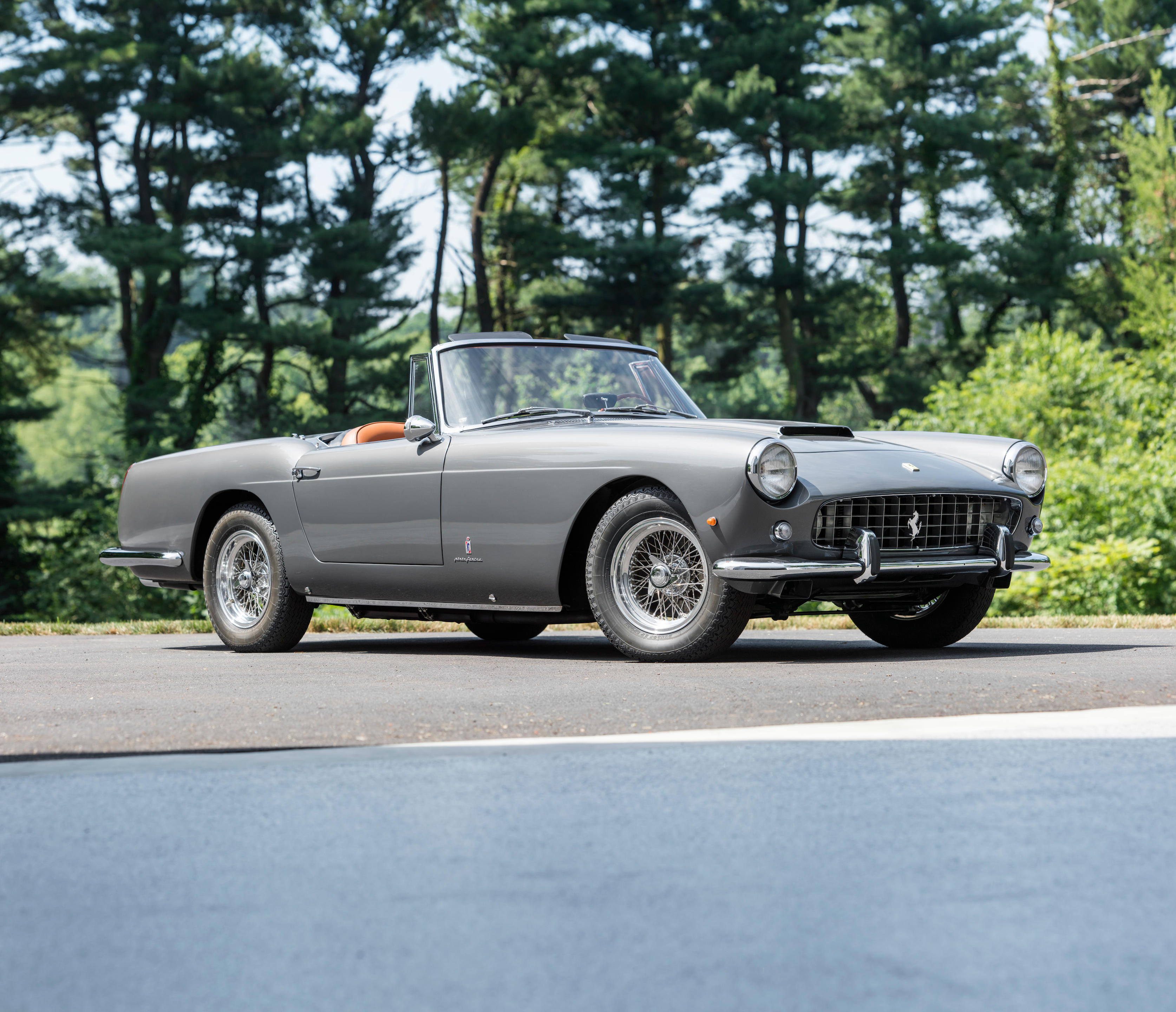
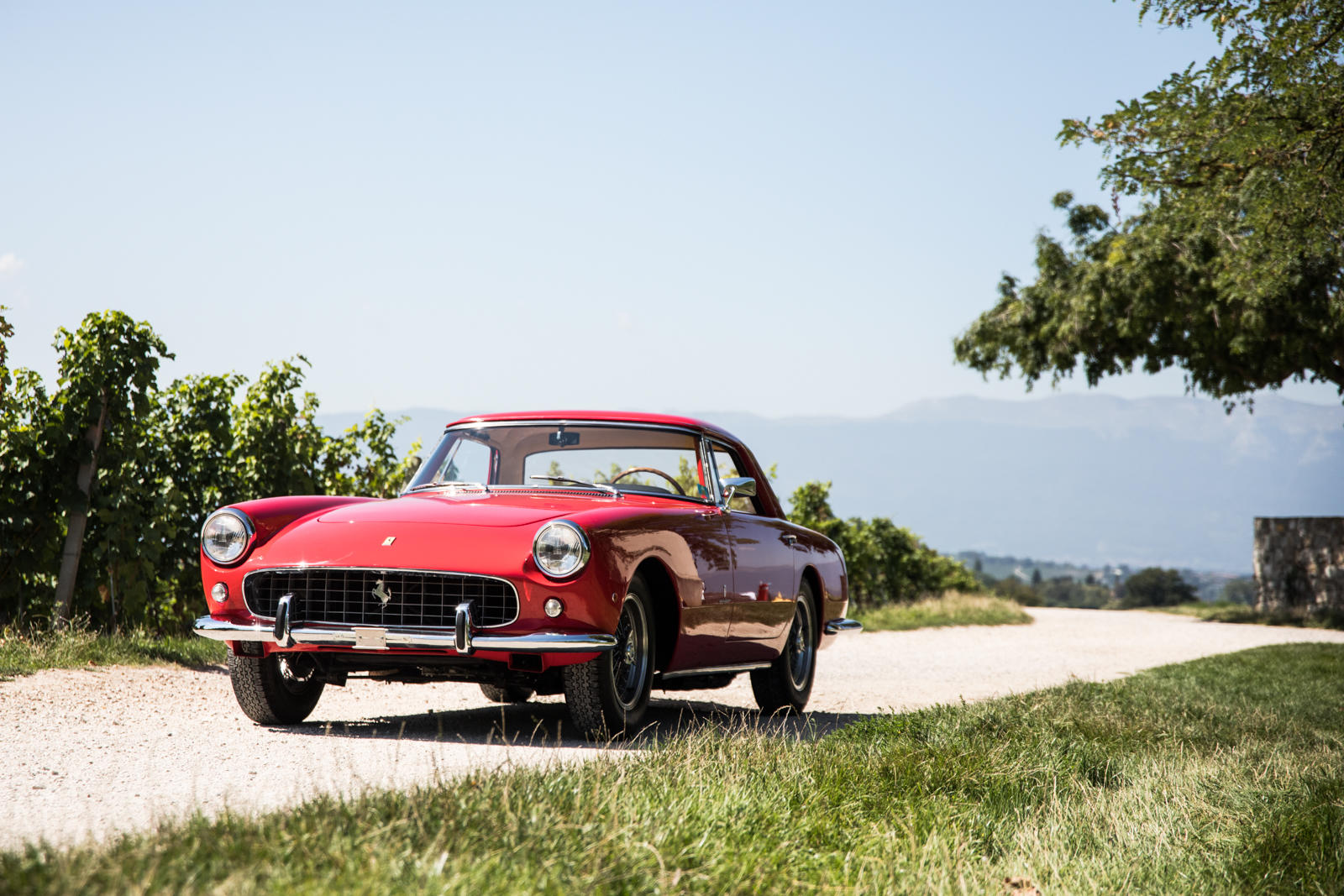
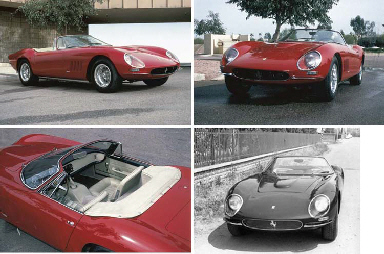





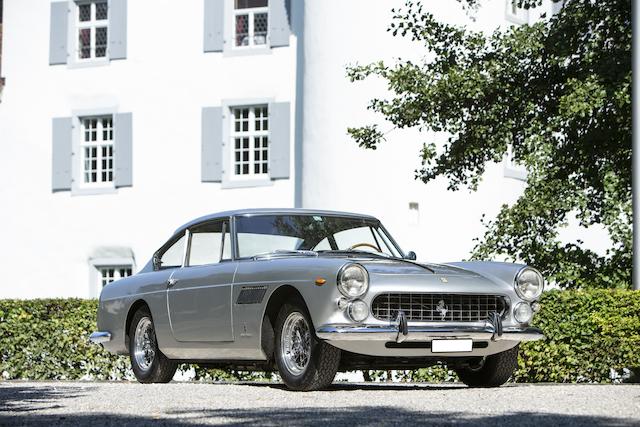
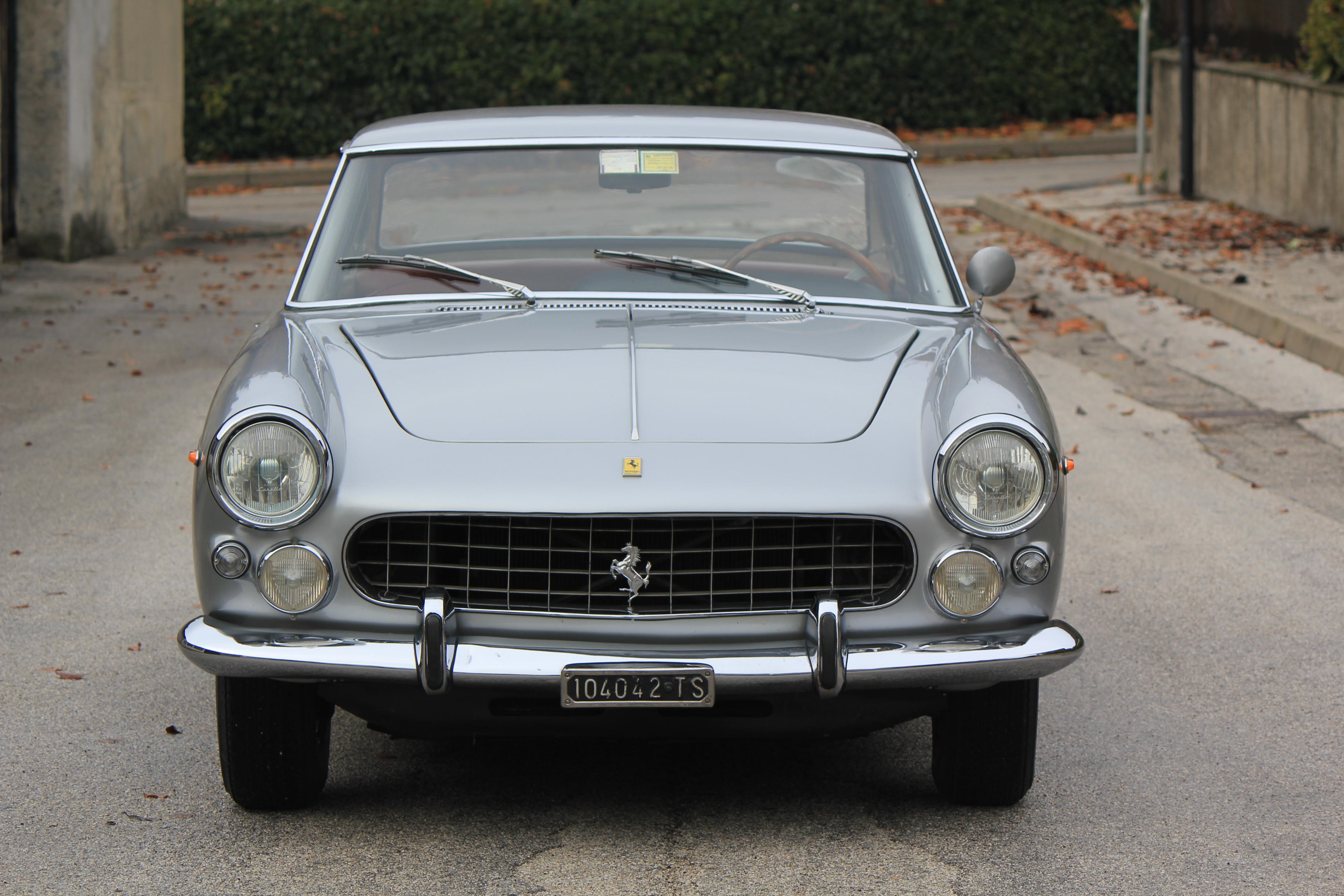

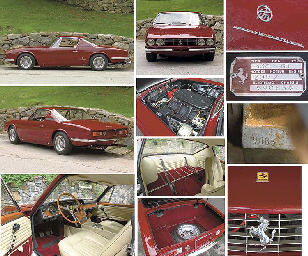

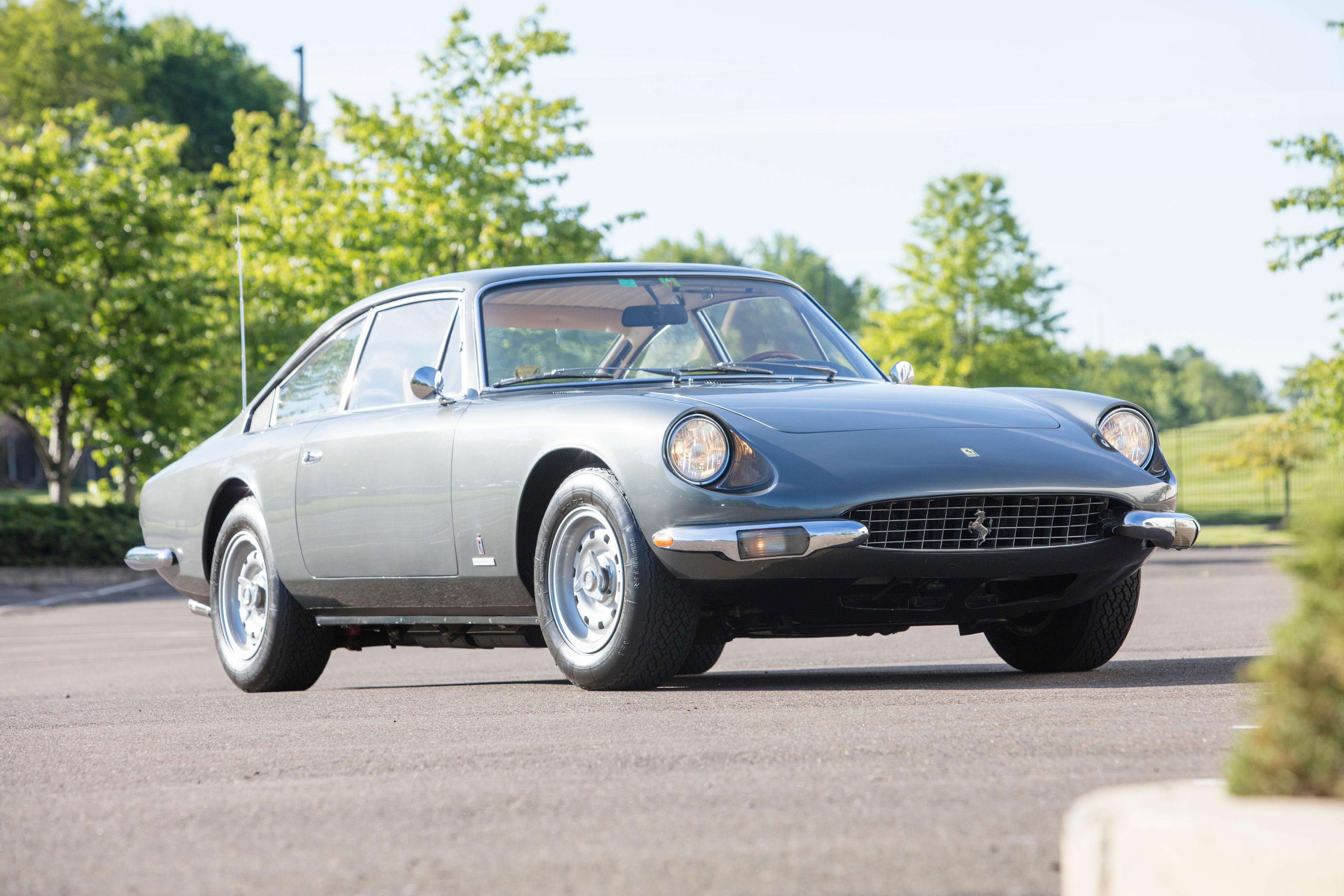
Testen Sie LotSearch und seine Premium-Features 7 Tage - ohne Kosten!
Lassen Sie sich automatisch über neue Objekte in kommenden Auktionen benachrichtigen.
Suchauftrag anlegen